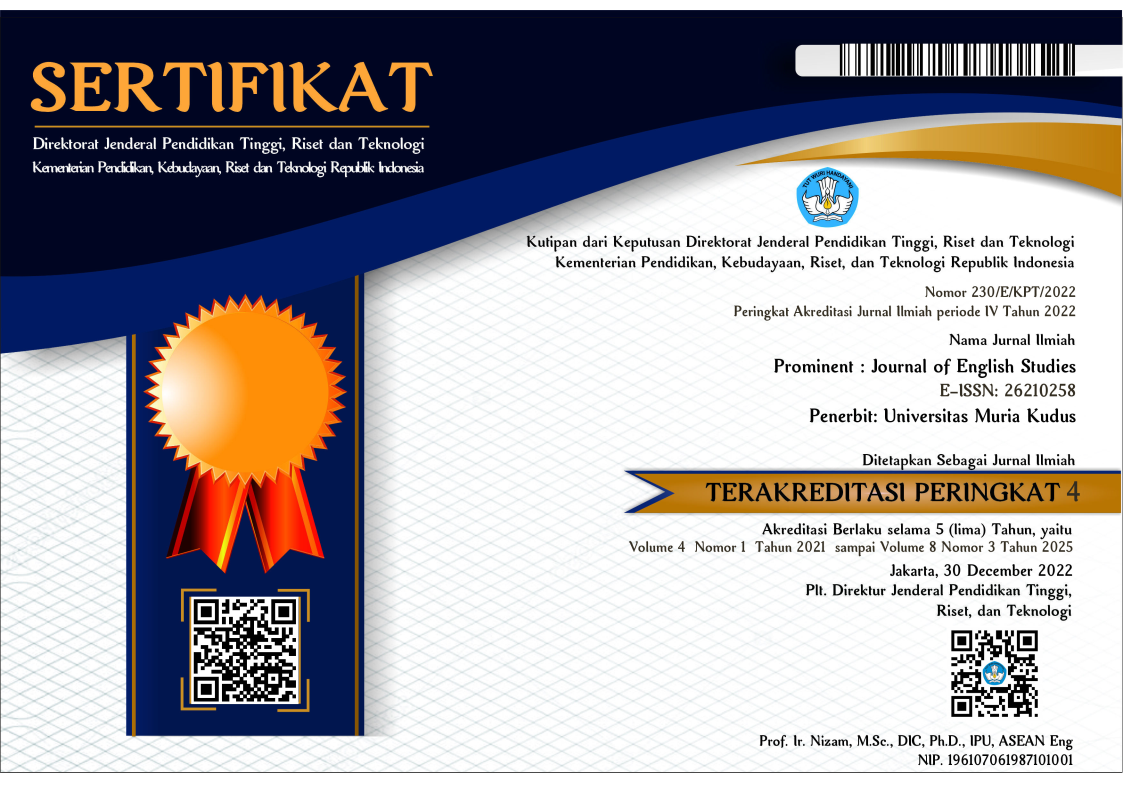DISCRETE AND INTEGRATED APPROACH AND THE IMPLICATIONS ON LANGUAGE TEACHING LEARNING MANAGEMENT
Abstract
This paper describes discrete and integrated approach and the implication on language teaching learning management. Discrete approach emphasizes on the teaching and learning a language discretely, whereas integrated approach emphasizes on the whole language, namely speaking, writing, listening, reading, pronunciation, grammar, and vocabulary. In fact, both are interrelated since discrete learning is the basis for integrated learning. Both should be implemented in the teaching learning process in the classroom so that students are able to use the language well. Therefore, the curriculum or the syllabus, teaching materials, teachers’ qualification, and classroom management should be prepared well.
Keywords
Full Text:
PDFReferences
Aponte-de-Hanna, C. (2015). A discrete approach to teaching ESL – what does it mean? Accessed on 14 March 2016 from http://blog.teslontario.org/a-discrete-approach-to-teaching-esl-what-does-it-mean/.
Aslam, R. (1992_. Aspect of language teaching. New Delhi: Nothern Book Centre.
Beglar, David & Hunt, A. Implementing task-based language teaching in Richards and Renandya. (2002). Methodology in language teaching: An anthology of current practice.
Crawford, J. (2002) The role of materials in the language classroom: Finding the balance. In Richards and Renandya. Methodology in language teaching: An anthology of current practice.
Dewi, R.K. & Natiti, N.S. (2012). Approaches in language testing. Accessed on 14 March 2016 from https://thejoyoflanguageassessment.wordpress.com/2012/12/19/approaches-in-language-testing-2/
Finney, D. (2002).The ELT curriculum: A flexible model for a changing world in Richards and Renandya. Methodology in language teaching: An anthology of current practice.
Halliday, M.A.K. (1973). Explorations in the Functions of Language. London: Edward Arnold.
Hinkel, E. (2011). Encyclopedia of the science of learning. Springer science, Business Media, LLC.
Kecira, R & Shilaku, A. (2014). Skills segregation versus skills integration in FLT in ICRAE Conference – Paper proceedings, ISSN: 2308-0825.
Larsen-Freeman, D. (2000). Techniques and principles in language learning. Oxford University Press.
Littlewood, W. (1981). Communicative language teaching: An introduction. New York: Cambridge University Press.
Madya, S. (2013). Metodologi pengajaran bahasa dari era prametode sampai era pascametode. Yogyakarta: UNY Press.
Oxford, R. (2001). Integrated skills in the ESL/EFL classroom. Eric Digest. Accessed on 14 March 2016 from http://www.ericdigests.org/2002-2/esl.htm.
Rahardi, R. K. (2009). Bahasa Indonesia untuk perguruan tinggi. Jakarta: Erlangga
Rhalmi, M. (2009). Language testing. Accessed on 14 March 2016 from http://www.myenglishpages.com/blog/language-testing/
Richards, J. C. and Willy A. R. (2001). Methodology in language teaching: An anthology of current practice. New York: Cambridge University Press.
Richards, J.C. and Theodore S. R. (1986). Approaches and methods in language teaching. Cambridge: Cambridge University Press.
Richards, J., Plait, J. & Weber, H. (1985). Longman dictionary of applied linguistics. Longman
Smith, D. B. (1996). Teacher Decision Making in the Adult ESL Classroom in Teacher Learning in language Teaching, edited by Donald A. Freeman and J. C. Richards. Cambridge: Cambridge University Press.
Stoller, F. L. (2002). Project Work: A means to promote language and content in Richards and Renandya. Methodology in language teaching: An anthology of current practice.
Tillitt, B. & Bruder, M.N. (1985). Speaking naturally: Communication skills in American English. New York: Cambridge University Press.
DOI: https://doi.org/10.24176/pro.v4i1.5755
Refbacks
- There are currently no refbacks.
Prominent Journal of English Studies is licensed under a Creative Commons Attribution-ShareAlike 4.0 International License.
Dedicated to:

in Collaboration with APSPBI:






